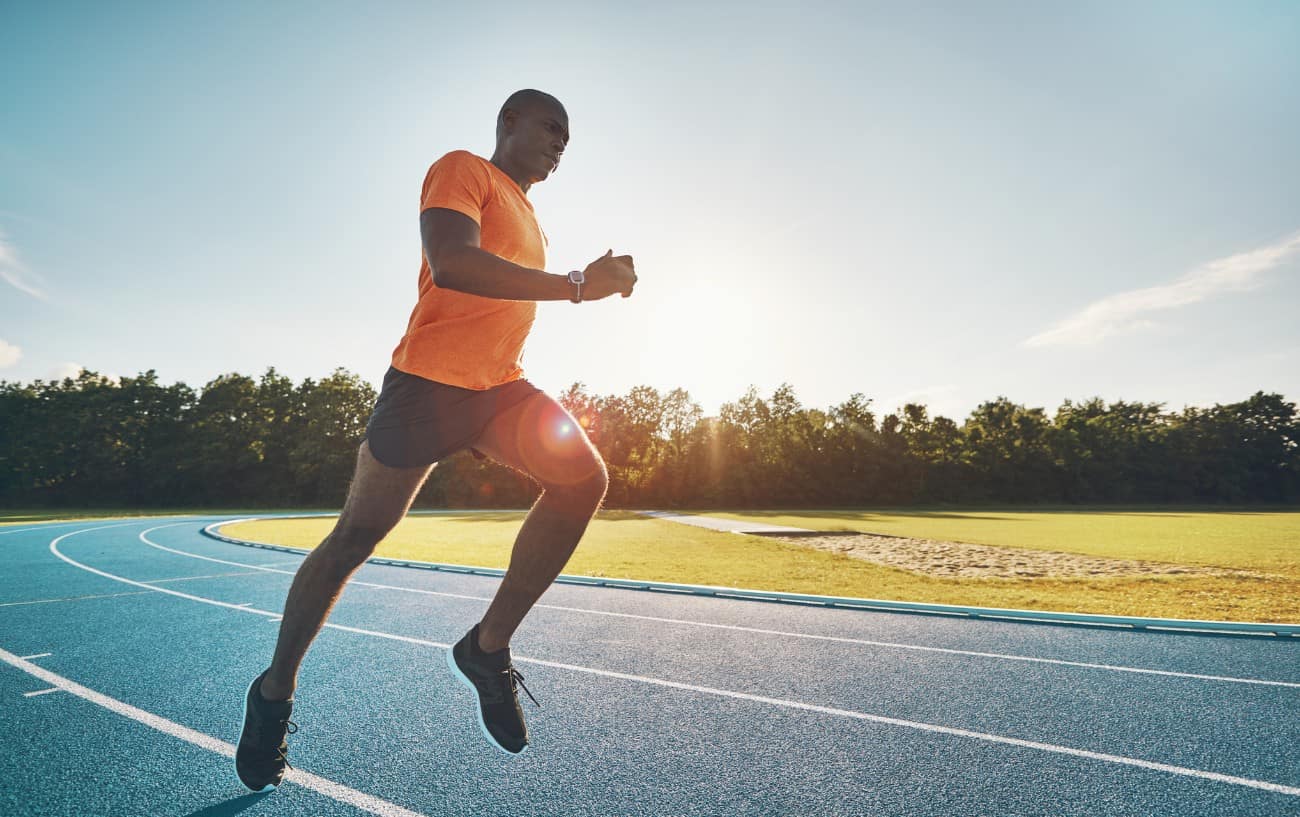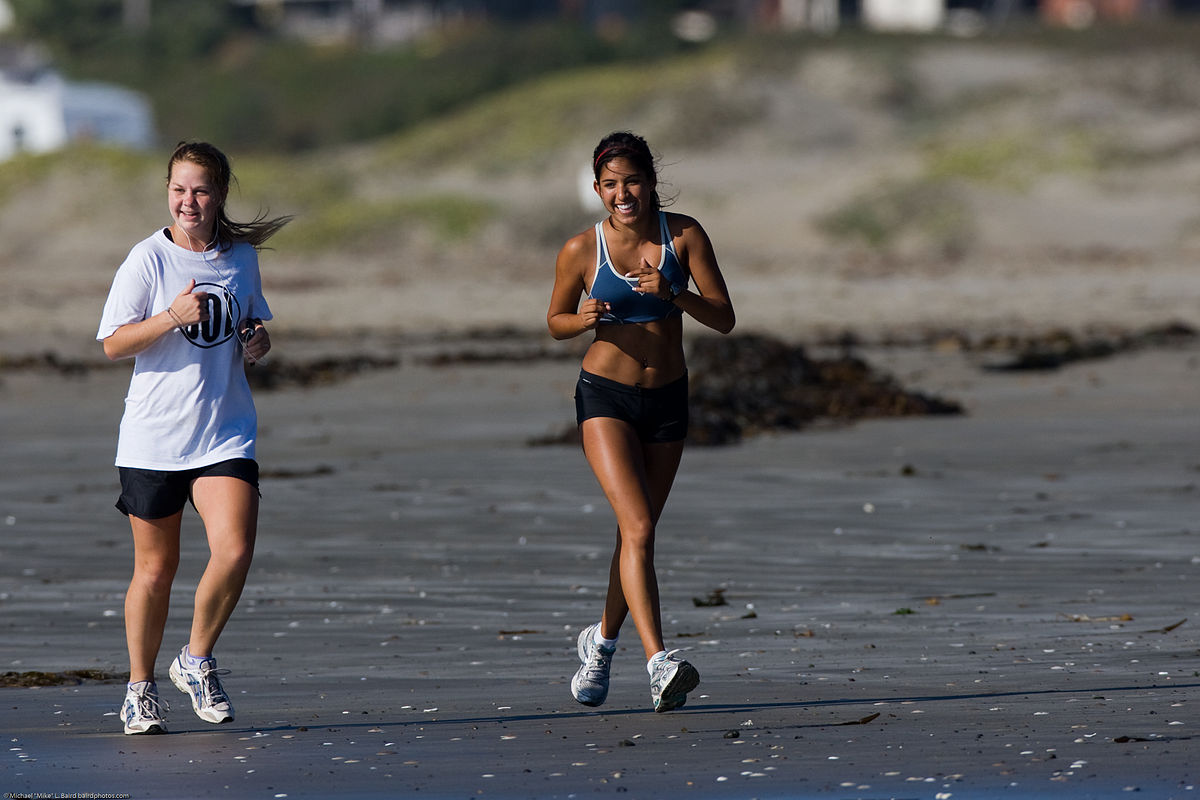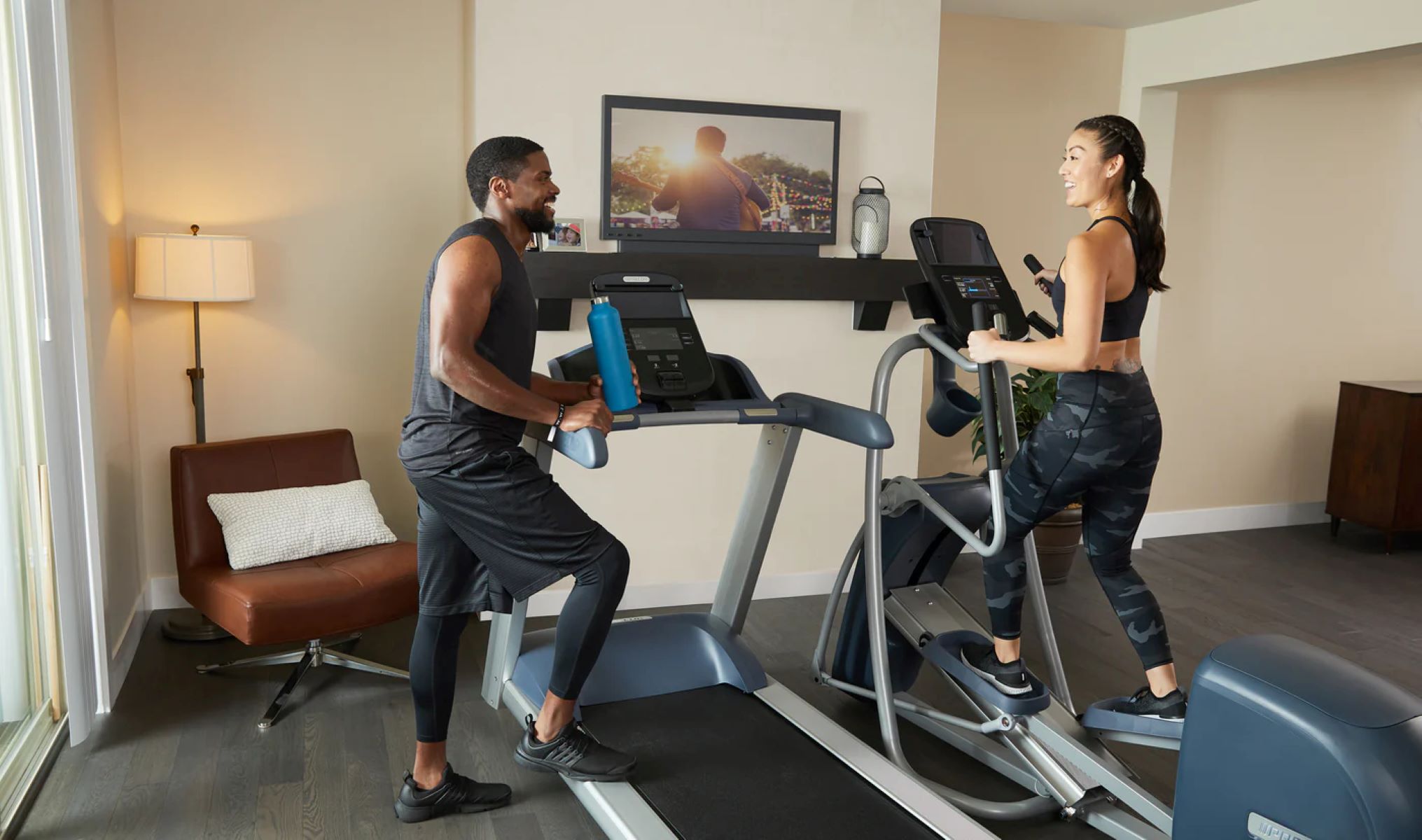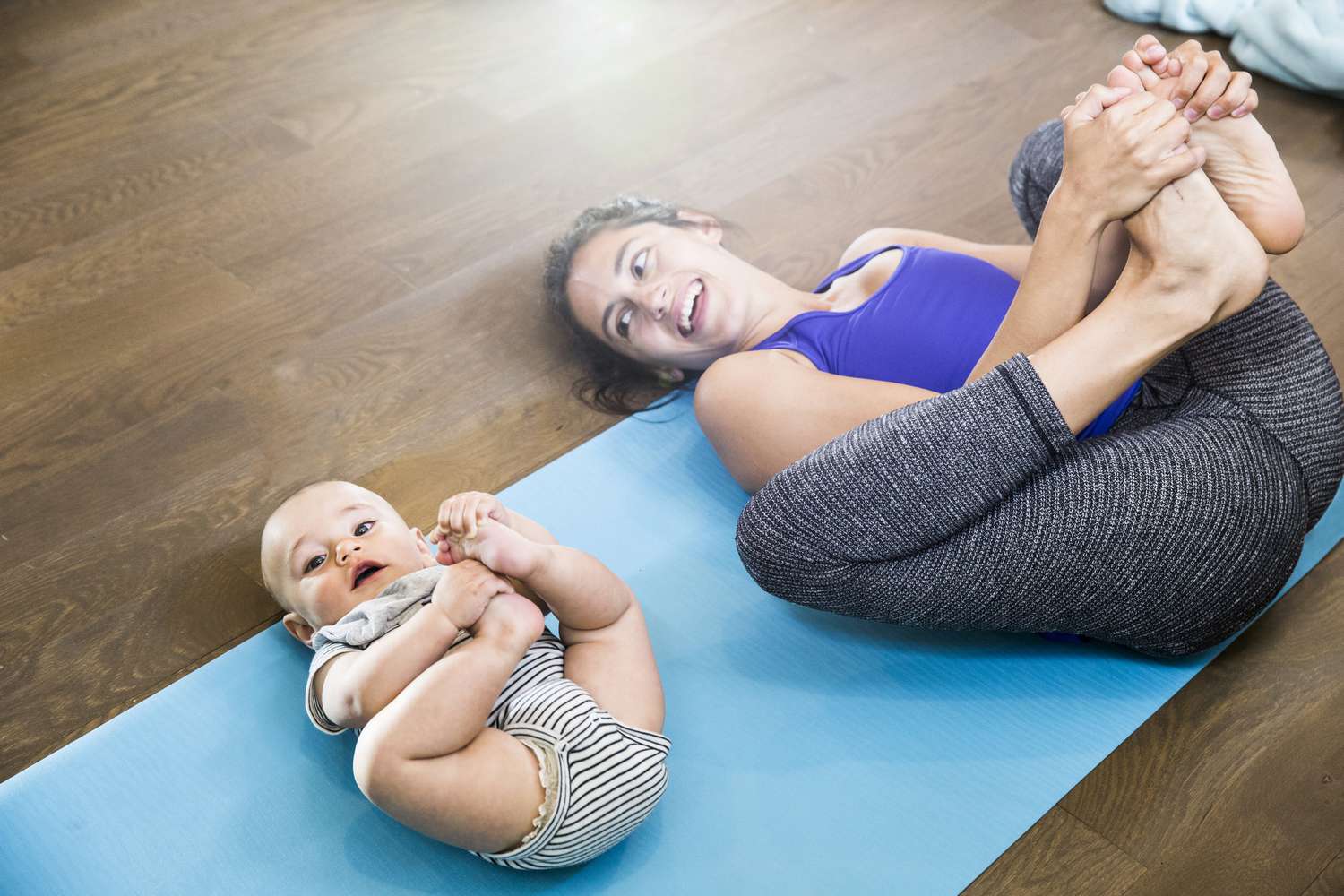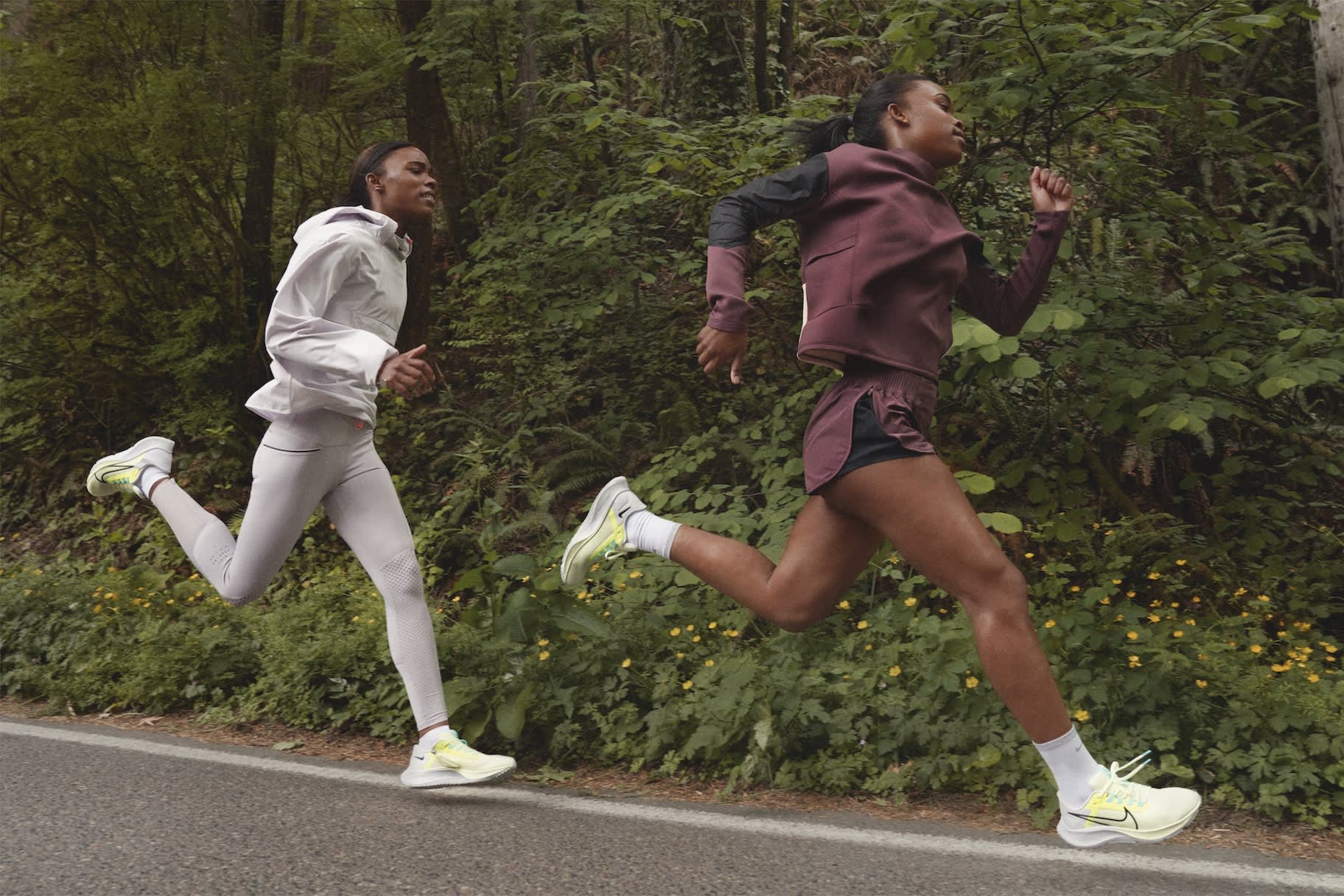

Featured
Which Muscles Does Jogging Work
Modified: January 2, 2024
Jogging is a featured exercise that targets multiple muscles in the body, including the legs, glutes, and core. Discover the benefits and muscle groups worked through regular jogging.
Introduction
Jogging is a popular form of exercise that offers numerous health benefits. Not only does it provide cardiovascular benefits, but it also helps to strengthen and tone various muscle groups in the body. Whether you are a seasoned runner or just starting out, understanding which muscles jogging works can help you make the most out of your workouts and achieve your fitness goals.
Jogging is a dynamic, weight-bearing exercise that requires the coordination of several muscle groups to propel the body forward. In addition to burning calories and improving your stamina, regular jogging can help you build muscle strength and endurance.
In this article, we will explore the different muscles that are worked during jogging and how they contribute to overall fitness. By understanding the muscles involved, you can tailor your workouts to target specific areas and maximize the benefits of your jogging routine.
So, lace up your running shoes and let’s dive into the world of jogging and the muscles it works!
Benefits of Jogging
Jogging offers a multitude of benefits for both your physical and mental well-being. Incorporating regular jogging into your fitness routine can have a significant impact on your overall health. Here are some key benefits of jogging:
- Improved cardiovascular health: Jogging is an excellent form of aerobic exercise that gets your heart pumping and increases your lung capacity. Regular jogging can improve the health of your heart and lungs, reducing the risk of cardiovascular diseases.
- Weight management: Jogging is a calorie-burning activity that can help you maintain a healthy weight or assist with weight loss goals. It increases your metabolism and helps to shed excess fat, especially when combined with a balanced diet.
- Strengthened muscles and bones: Jogging is a weight-bearing exercise that causes your muscles and bones to work against gravity. This helps to strengthen your leg muscles, including your quadriceps, hamstrings, and calves, as well as improve bone density, reducing the risk of osteoporosis.
- Improved mental health: Jogging is known to release endorphins, which are natural mood lifters. It can reduce stress, anxiety, and symptoms of depression. Regular jogging can also improve sleep quality and enhance cognitive function.
- Boosted immune system: Engaging in regular moderate-intensity exercise, like jogging, has been shown to strengthen the immune system. It can help reduce the risk of common illnesses such as colds and flu.
- Increased longevity: Jogging has been linked to increased life expectancy. Studies have shown that regular joggers live longer compared to those who do not engage in regular physical activity.
- Enhanced overall fitness and endurance: Jogging is a great way to improve your overall fitness level. It increases your cardiovascular endurance, strengthening your heart and allowing you to engage in other activities with greater ease.
With all these incredible benefits, it’s no wonder that jogging is a popular exercise choice for people of all ages and fitness levels. So, put on your running shoes and start reaping the rewards of this fantastic form of exercise!
Muscles Worked During Jogging
Jogging is a full-body exercise that engages multiple muscle groups to propel the body forward and maintain balance and stability. While the primary focus is on the lower body, several upper body muscles and core muscles also play a significant role. Let’s take a closer look at the muscles worked during jogging:
Upper Body Muscles
Although jogging primarily targets the lower body, the upper body muscles play a supportive role in maintaining balance, alignment, and arm swing.
- Shoulders and arms: The deltoids, triceps, and biceps are engaged during jogging, especially when swinging the arms. These muscles help to stabilize the upper body and maintain momentum.
- Upper back and chest: The muscles in the upper back, such as the rhomboids and trapezius, along with the pectoral muscles in the chest, provide support and stability during jogging.
Lower Body Muscles
Jogging primarily targets the muscles in the lower body, particularly those in the legs and buttocks.
- Quadriceps: The quadriceps muscles, located in the front of the thighs, are highly engaged during jogging. These muscles work to extend the knee and provide the power needed to lift the leg forward.
- Hamstrings: The hamstrings, located at the back of the thighs, play a key role in decelerating the leg during the swing phase of jogging. They also assist in propelling the body forward.
- Calves: The calf muscles, including the gastrocnemius and soleus, are heavily involved in jogging. These muscles help to push off the ground and provide the force necessary for forward motion.
- Glutes: The gluteus maximus and gluteus medius muscles are responsible for hip extension and abduction during jogging. They provide power and stability to the hips and contribute to forward propulsion.
Core Muscles
The core muscles, including the abdominals, obliques, and lower back muscles, play a vital role in maintaining stability and proper body alignment while jogging.
- Abdominals: The rectus abdominis, transverse abdominis, and obliques help stabilize the pelvis and maintain proper posture during jogging.
- Lower Back: The erector spinae muscles in the lower back provide support and help maintain an upright posture while running.
By engaging these upper body, lower body, and core muscles, jogging provides a well-rounded workout that targets multiple muscle groups simultaneously. This holistic approach not only improves muscle strength and endurance but also enhances overall athletic performance.
Upper Body Muscles
While jogging primarily focuses on the lower body, it also engages several upper body muscles to maintain balance and stability. Although the upper body doesn’t generate as much force as the legs during jogging, it still plays an important role in supporting the overall movement. Let’s explore the upper body muscles worked during jogging:
- Shoulders: The deltoid muscles in the shoulders are engaged during jogging, especially in the arm swing motion. These muscles help to stabilize the upper body and maintain proper arm movement.
- Arms: The triceps and biceps muscles in the arms are also involved during jogging due to the swinging motion. When you jog, your arms naturally swing back and forth to help maintain balance and momentum. As a result, the triceps and biceps muscles are activated and contribute to the overall effort.
- Chest: The pectoralis major and minor muscles in the chest also come into play during jogging. These muscles provide stability to the upper body and assist in maintaining an upright posture while running.
- Upper Back: The muscles in the upper back, including the rhomboids and trapezius, are engaged to support the shoulders and maintain proper alignment. These muscles help to stabilize the scapulae (shoulder blades), allowing for smooth movements during jogging.
While the upper body muscles may not be the primary drivers of jogging, they are crucial for maintaining balance, coordination, and proper technique. Neglecting the upper body can lead to imbalances and inefficiencies in your movement, potentially increasing the risk of injuries.
It’s important to note that the intensity of upper body muscle engagement during jogging will depend on factors such as arm swing range and frequency. However, by consciously engaging your upper body and maintaining proper form, you can maximize the benefits of jogging and ensure a well-rounded workout.
So, next time you go for a jog, pay attention to your upper body and make an effort to maintain a relaxed yet engaged posture. By involving your upper body muscles, you’ll not only improve your overall performance but also strengthen the muscles that often get overlooked in traditional lower body-focused exercises.
Lower Body Muscles
Jogging is an excellent exercise for targeting and strengthening the muscles in the lower body. As a weight-bearing activity, it involves numerous muscles working together to propel you forward. Let’s delve into the lower body muscles that are worked during jogging:
- Quadriceps: The quadriceps muscles at the front of the thighs are heavily involved in jogging. They are responsible for extending the knee joint, which is crucial for the push-off phase. The quadriceps consist of the vastus medialis, vastus lateralis, vastus intermedius, and rectus femoris muscles.
- Hamstrings: Located at the back of the thighs, the hamstring muscles play an important role in jogging. They help in bending the knee and are responsible for the deceleration phase of the leg swing. The hamstrings include the biceps femoris, semitendinosus, and semimembranosus muscles.
- Glutes: The gluteal muscles, specifically the gluteus maximus and gluteus medius, are engaged during jogging. These muscles, located in the buttocks, contribute to hip extension, abduction, and overall hip stability. They play a key role in propelling the body forward and maintaining balance.
- Calves: The calf muscles, consisting of the gastrocnemius and soleus, are crucial for ankle plantar flexion during jogging. They help with pushing off the ground and propelling the body forward. Additionally, the calf muscles work to absorb shock upon landing, reducing the impact on the lower body.
- Tibialis Anterior: Although often overlooked, the tibialis anterior muscle on the front of the lower leg is also engaged during jogging. This muscle helps in dorsiflexion, which is the upward movement of the foot towards the shin. The tibialis anterior controls the rate at which the foot strikes the ground and contributes to overall balance and stability.
By working these lower body muscles through jogging, you can strengthen and tone your legs, improve stability, and increase your overall endurance. It’s important to note that the intensity of muscle engagement may vary depending on factors such as speed, terrain, and running technique.
Engaging in regular jogging not only targets these specific muscles but also improves their endurance. As you gradually increase the distance or duration of your jogs, these muscles adapt and become stronger over time.
So, the next time you go for a run, think about the incredible work your lower body muscles are doing to propel you forward and power your jog. By focusing on these muscles and maintaining proper form, you can maximize the benefits of jogging and achieve stronger, more toned legs.
Core Muscles
Jogging not only engages the muscles in the lower and upper body but also works the core muscles. The core muscles are responsible for providing stability, maintaining proper posture, and transferring power between the upper and lower body. Let’s explore the core muscles that are involved during jogging:
- Abdominals: The abdominal muscles, including the rectus abdominis, transverse abdominis, and obliques, play a crucial role in jogging. These muscles provide stability to the pelvis and trunk, helping to maintain proper form and preventing excessive rotation of the torso.
- Lower Back: The muscles in the lower back, such as the erector spinae, also contribute to core stability during jogging. These muscles help to support the spine and maintain an upright posture while running.
- Hip Flexors: The hip flexor muscles, including the iliopsoas, rectus femoris, and sartorius, work to lift the legs forward during jogging. These muscles help to initiate the swing phase and contribute to the overall movement efficiency.
- Pelvic Floor Muscles: The pelvic floor muscles, including the pubococcygeus and coccygeus muscles, are essential for core stability and proper functioning of the pelvis. These muscles help in maintaining control and stability during jogging, reducing the risk of injuries and improving overall performance.
The engagement of these core muscles during jogging is crucial for maintaining proper posture, preventing lower back pain, and reducing the risk of imbalances or injuries. Strong core muscles also enhance overall running efficiency, as they optimize the transfer of power between the upper and lower body.
Incorporating core-strengthening exercises into your workout routine, alongside jogging, can further enhance the strength and stability of these muscles. Exercises such as planks, Russian twists, and deadlifts can help target and strengthen the core muscles, ultimately improving your jogging performance.
Remember, a strong and stable core is not only beneficial for jogging but also for everyday activities and overall functional movement. So, make sure to pay attention to your core muscles and prioritize core strength as part of your fitness routine.
Additional Muscles Engaged
In addition to the major muscle groups mentioned earlier, jogging also engages a variety of other muscles throughout the body. While these muscles may not be the primary focus, they play a supportive role in maintaining proper form, stability, and overall execution of the movement. Let’s explore some of the additional muscles that are engaged during jogging:
- Forearms: The muscles in the forearms, including the flexor and extensor muscles, play a role in maintaining a relaxed arm swing while jogging. They help with grip and control, ensuring efficient movements and reducing unnecessary tension in the upper body.
- Neck Muscles: The muscles in the neck, particularly the sternocleidomastoid and trapezius muscles, assist in maintaining proper head alignment during jogging. These muscles work to stabilize the head and prevent excessive forward or side-to-side movement.
- Posterior Chain: The muscles along the backside of the body, including the erector spinae, gluteus maximus, and hamstrings, function as a unified chain during jogging. They collaborate to maintain alignment, provide power, and assist in propulsion.
- External Rotators of Hips: The muscles responsible for external rotation in the hips, such as the piriformis and deep hip rotators, help in maintaining proper hip alignment during jogging. They provide stability and prevent excessive inward rotation of the legs.
- Ankle Stabilizers: The muscles in the feet and ankles, including the intrinsic foot muscles and the ankle stabilizers, play a vital role in maintaining balance and stability during jogging. These muscles help to absorb shock, prevent excessive pronation or supination, and provide a solid foundation for each stride.
While these additional muscles may not be as prominently engaged as the major muscle groups, their involvement is essential for optimal performance and injury prevention. Strengthening and conditioning these muscles through targeted exercises can further enhance your overall jogging experience and minimize the risk of imbalances or weaknesses.
It’s important to remember that jogging is a full-body exercise, and each muscle group plays a part in the intricate coordination required for efficient movement. By being mindful of these additional muscles, you can ensure a well-rounded and balanced jogging routine.
So, when you’re out on your next jog, take a moment to appreciate the multitude of muscles that are working together to keep you moving forward. By acknowledging and nurturing these muscles, you can optimize your performance and increase your enjoyment of this fantastic form of exercise.
Conclusion
Jogging is an excellent form of exercise that offers a multitude of benefits for both the body and mind. Not only does jogging provide cardiovascular benefits and promote weight management, but it also strengthens and tones various muscle groups throughout the body.
During jogging, a variety of muscles are engaged, including the upper body muscles, lower body muscles, core muscles, and additional supporting muscles. The upper body muscles help maintain balance and stability while the lower body muscles propel the body forward and provide power. The core muscles play a crucial role in maintaining proper posture and transferring energy between the upper and lower body. Additionally, various other muscles, such as the forearms, neck muscles, posterior chain, external hip rotators, and ankle stabilizers, contribute to overall movement efficiency and stability.
By understanding which muscles are worked during jogging, you can focus on strengthening and conditioning specific areas, leading to improved muscle strength, endurance, and overall fitness. Targeted exercises can complement your jogging routine and help prevent imbalances or weaknesses.
Incorporating regular jogging into your fitness routine not only improves physical health but also has positive effects on mental well-being. It boosts cardiovascular health, aids in weight management, strengthens muscles and bones, reduces stress and anxiety, enhances the immune system, and increases longevity. Jogging is a versatile exercise that can be adapted to various fitness levels and can be enjoyed outdoors or indoors on a treadmill.
So, whether you are a seasoned runner or new to jogging, lace up your running shoes and hit the road or the treadmill. Embrace the benefits of this full-body exercise, strengthen your muscles, boost your fitness level, and enjoy the numerous physical and mental rewards that jogging brings!
